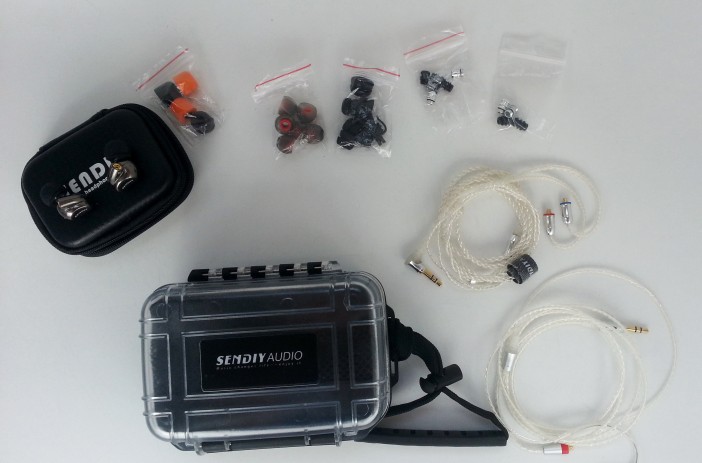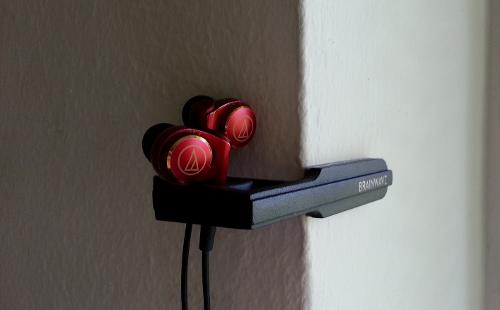
Let’s face it. The audiophile market gets more and more saturated by the minute. After my trip to the Munich High End, my own interest for audio plummeted. I really am happy with my FLC8s + Aune M1s set-up for now. While the FLC8s is not perfect, it comes very darn close to what I’d consider tonally ideal.
Anyway, today we are looking at the SENDIY M1221. Another chapter of the Chi-Fi storyline, emerging with each passing minute. Don’t get me wrong. They have some endearing qualities, but very few are tuned to accurately represent the source-material. Very fun and engaging, but often too coloured.
Onto the review:
Specifications:
- Resistance: 20Ω
- Sensitivity: 110±5dB
- Frequency Response Range: 20-20000Hz
- 1 Dynamic Driver + 1 Balanced Armature
- MMCX Connector
- 2x Cables, lots of tips and a pseudo pelican case.

Accessories & Build:
The SENDIY comes with a lot of accessories. A very sturdy pelican replica, two cables, tips en masse, another little pouch, you get the picture. Of course the IEMs are inside as well. The M1221s are well build. CNC aluminum has been used for the shells. The filters are available in two variations: the regular 8 mm ones and a shorter 6 mm option. In either case, fit is more on the shallow side of things. Isolation is above average and better than most dynamic / vented In-Ears on the market. Around -10dB ambient noise is to be expected.
I don’t like MMCX connectors by design, but they seem to be sturdy enough. Just keep in mind to not forcefully disconnect them all the time. They like to get clogged with dust and debris.

Sound-Analysis:
The M1221 has three different filters for you to choose from. The Gray dubbed as “Balance”, the silver dubbed “Bass” and the black ones dubbed “Treble”. Changes are only on a tonal level, however.
The M1221 is neither source sensitive nor is it especially difficult to drive.
Overall speaking the SENDIY M1221 is a very forward and engaging sounding IEM. It has a distinct 4kHz elevation, causing female vocals and string instruments to sound very prominent aka. the traditional V-Shape. The acoustic filters are mainly changing bass response. Unfortunately the included options are not altering much of the upper-midrange and treble area.

Bass:
The Bass response is grand and very typical of dynamic drivers. It possesses quite a lot of impact, with attack and decay being on the slower side. It does not feel all that bloated and it does not bleed much into the midrange. However with the Bass filters attached, it does get very bass-forward, often too much, with excessive mid-bass resulting in a very unbalanced tonality. Gray and Black are much more tame, but still quite strong in overall presentation. Around 8dB above the classical Diffuse-Field Target. The Gray and Black filter are ported, balancing the lower bass notes in comparison to the rest of the bass. Bass-heads should take a look at the M1221. Very fun. Great detail. Much wow.
Midrange:
The Mids remind me of the MEE P1, with their very resolving, but tonally quite aggressive upper-midrange (around 4kHz). Detail is very good, although the lower mids are somewhat recessed. Unfortunately the filters have no effect on midrange performance or tonality. Excellent at showcasing micro-detail and texture, although ever so often hot around the edges.
Treble:
Treble is very similar to the LZ A4 or the aforementioned MEE P1. As a matter of fact, the M1221 are very much in between the both IEMs in treble performance. All of them exhibit a dip from around 4-5kHz until around 8kHz, after they have another rise in SPL, sometimes causing stridency and fatigue. The LZ A4 does stay very polite, whereas the P1 can often be sibilant. The M1221 remains at a middle-ground. Still, the treble sounds off and lacks much of the linearity I value with some of the best in class. (Etymotic ER4 comes to mind)
Staging:
Soundstage is a bit of a mixed bag. It extends quite far in X-Axis, but remains rather shallow in depth. Everything sound quite ovular, great with some genres and terrible with others. Bigger sized assembles can sound claustrophobic at times. Evening up the midrange and treble with some minor EQing does work very well. A shame, instrument separation is very remarkable otherwise.
Improvements to be made?
My personal recommendation for improvements.
- Improve the Soundstage depth. I think it might be wise to ditch the filters and move the driver assembly back a couple of mm. Work on a proper sound-guide. I would argue some of the issued arise due to 2nd or 3rd order harmonic distortion.
- Improve midrange tonality by evening up 1kHz and 4kHz respectively.
- Some more treble linearity is appreciated.
The M1221 isn’t an outstandingly natural earphone, but its one that is incredibly vivid and engaging. Price does fluctuate around 150-200$. A fair price for what it does. For instance the A4 from LZ does sound much more relaxed and overall warmer and more defused in tonality. Detail is more apparent on the M1221, but at the cost of sounding hot. Also, the M1221 is much more practical in daily usage. I can safely say that the M1221 is another great option in the already vast landscape of great In-Ears. Whatever you make out of it…
My conclusion is overall fairly positive. The M1221 is an exciting earphone. It surprises with top-tier resolution and an overall thought-out package. If you’re prioritizing neutrality and linearity, look elsewhere. But if you just want to party hard. Game on.
Shout-out to SENDIY to sending me the M1221 for reviewing purposes. This review represents my own opinion.














































































































